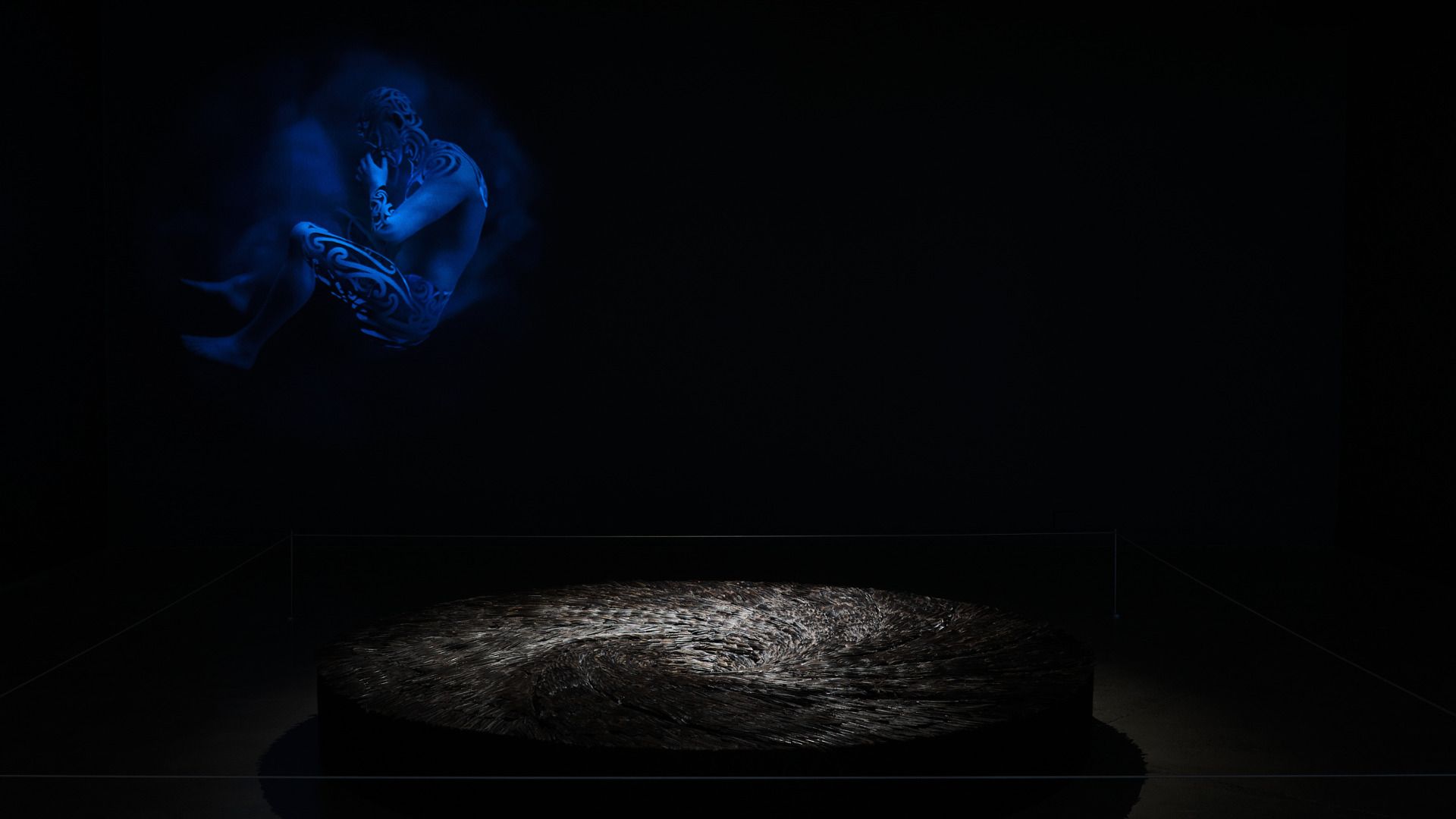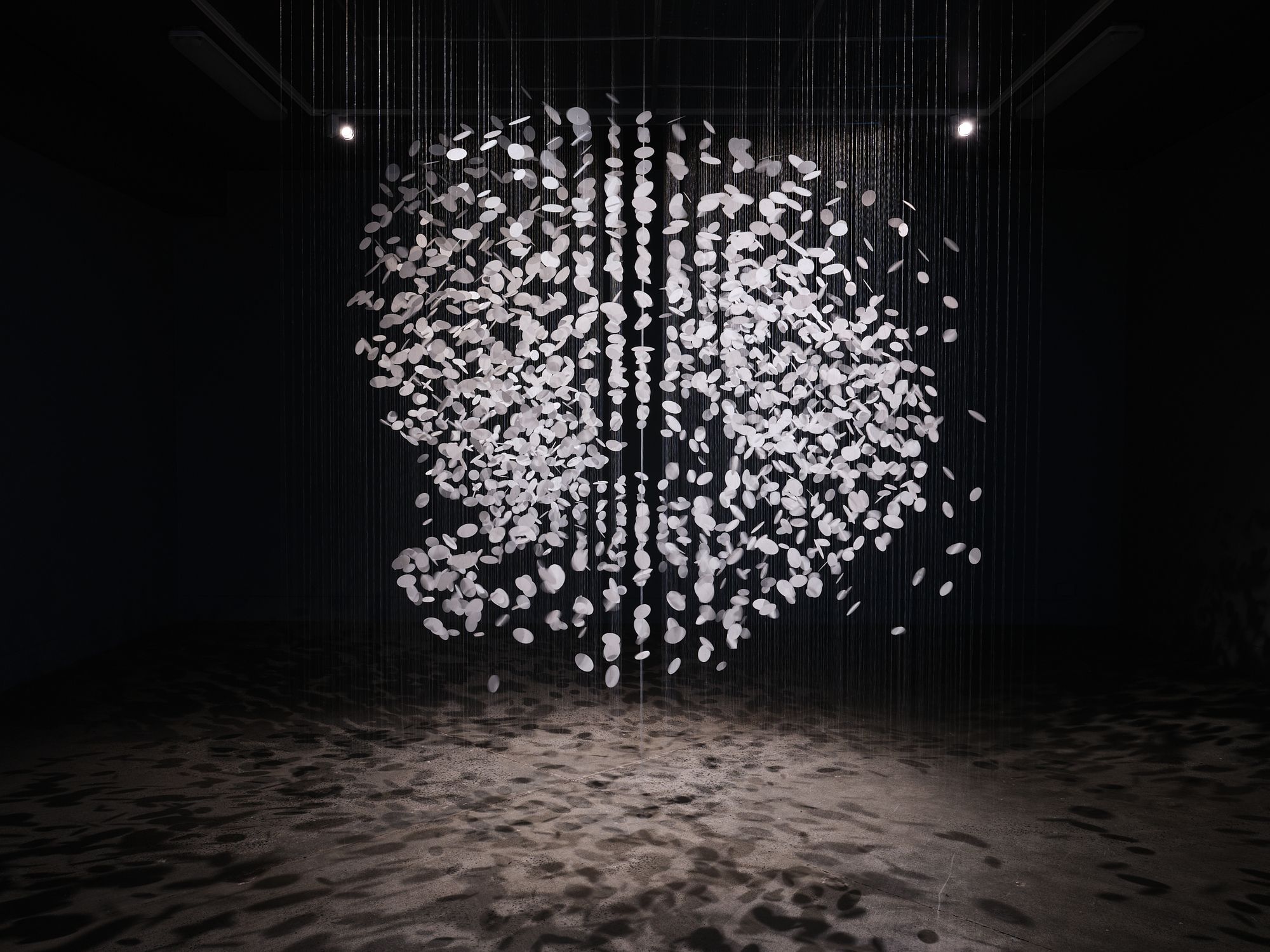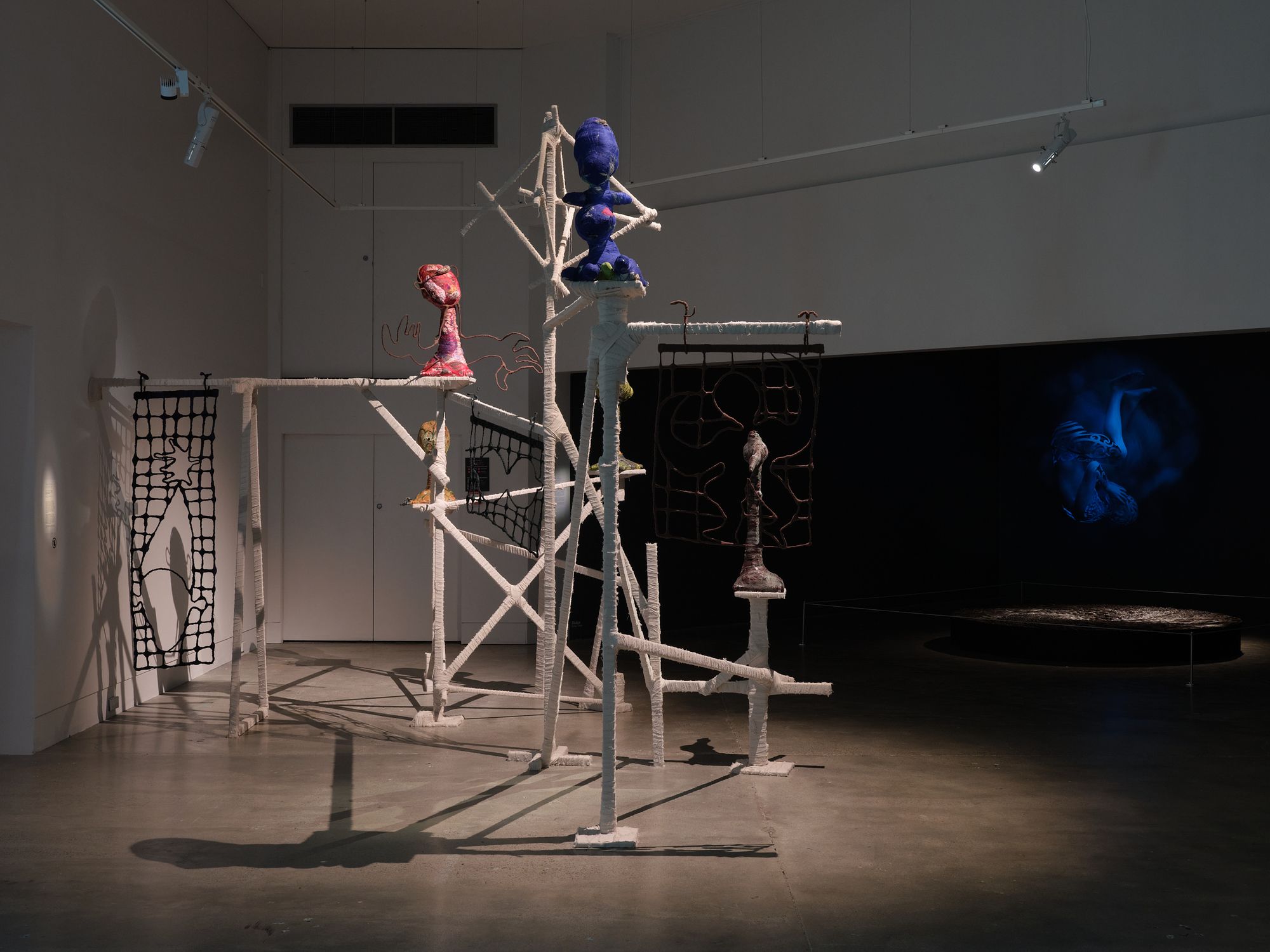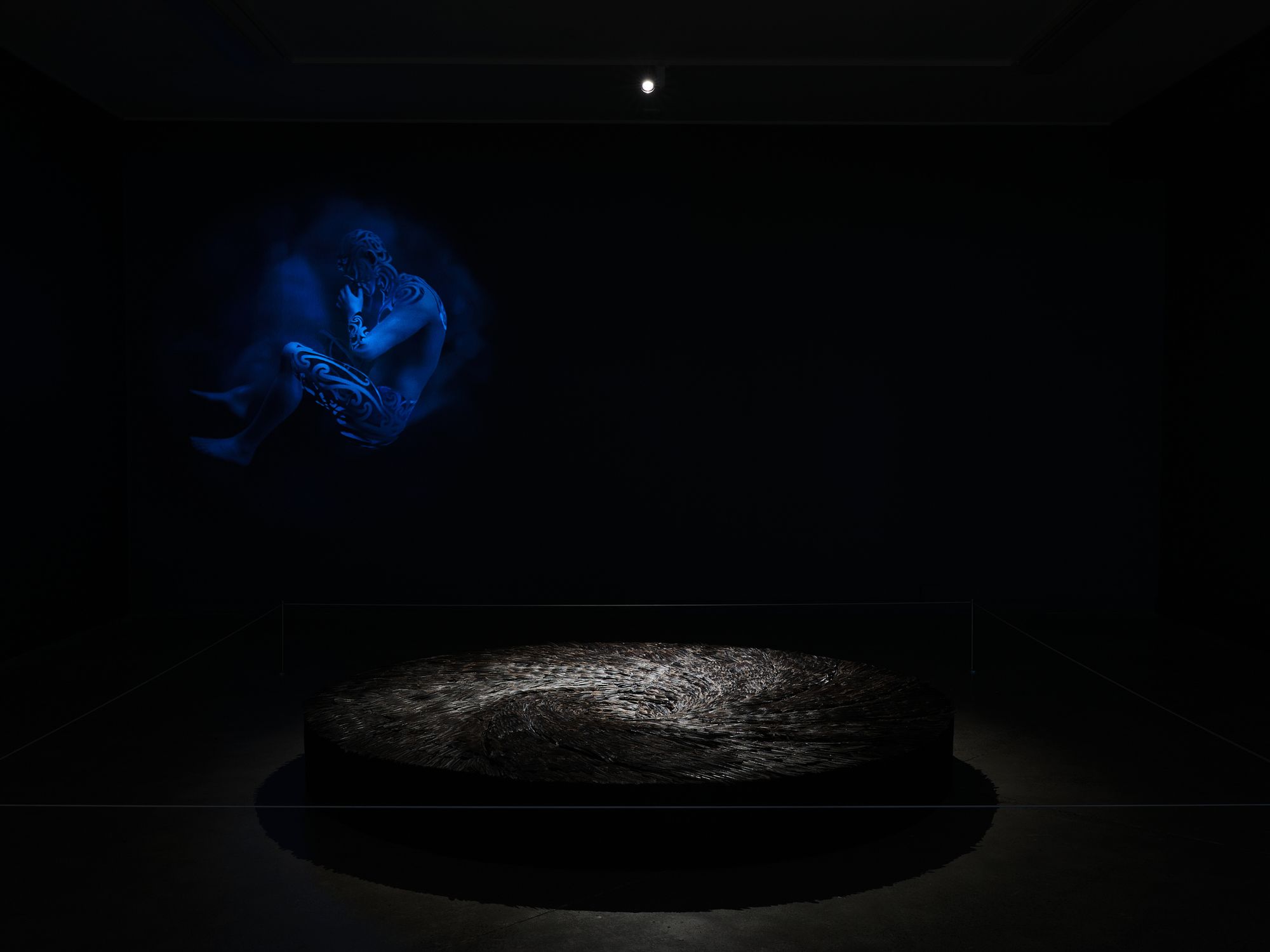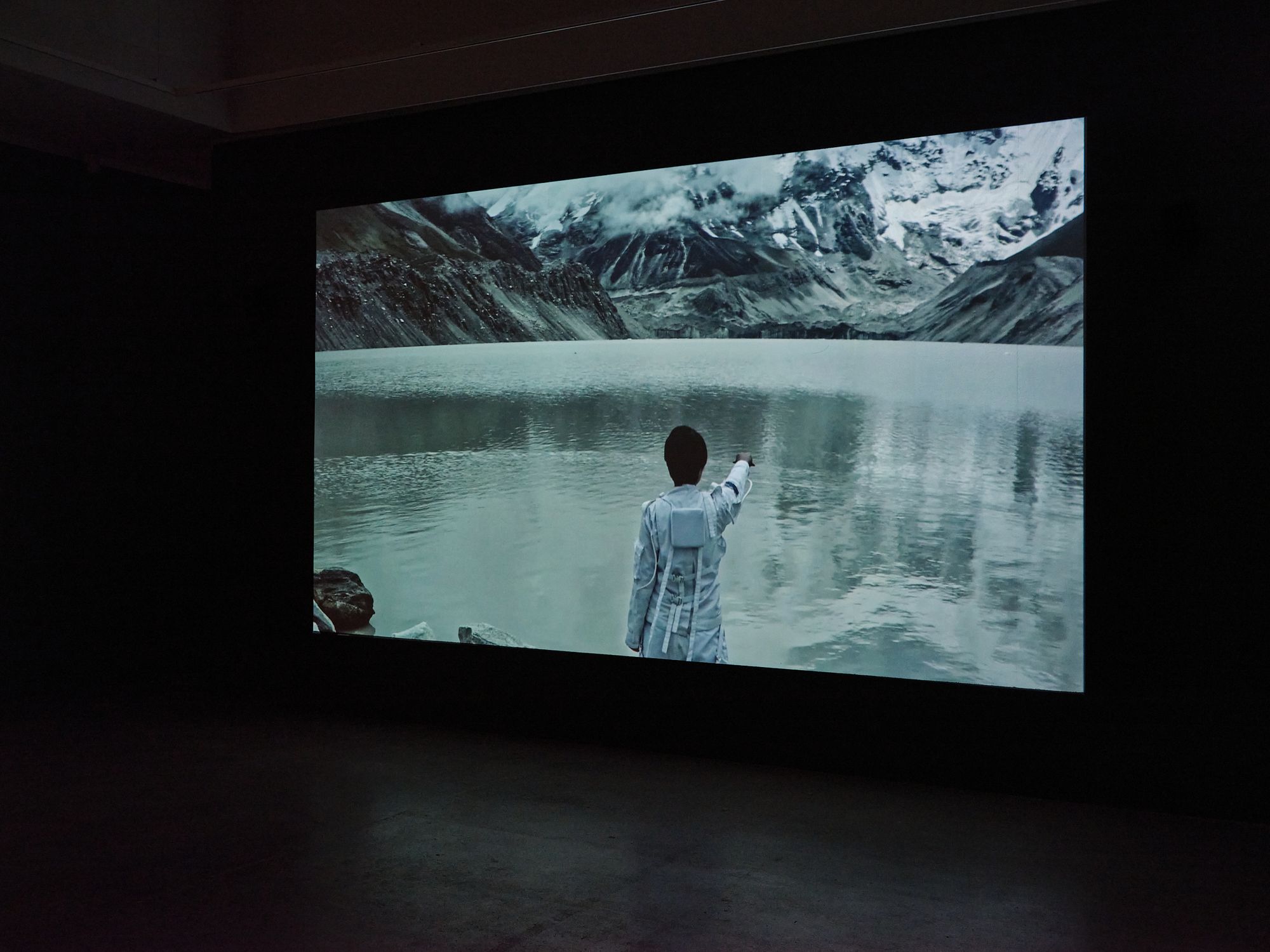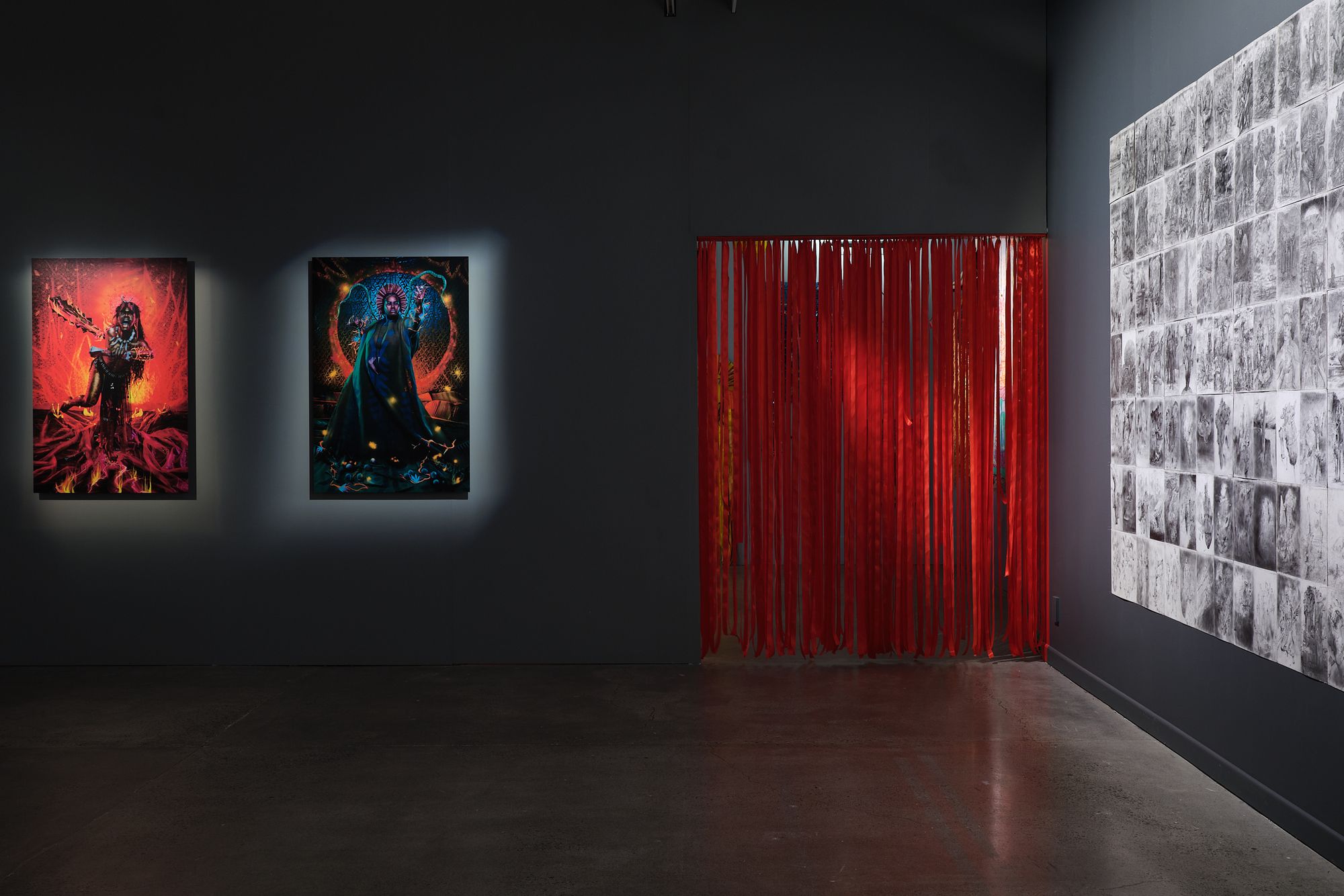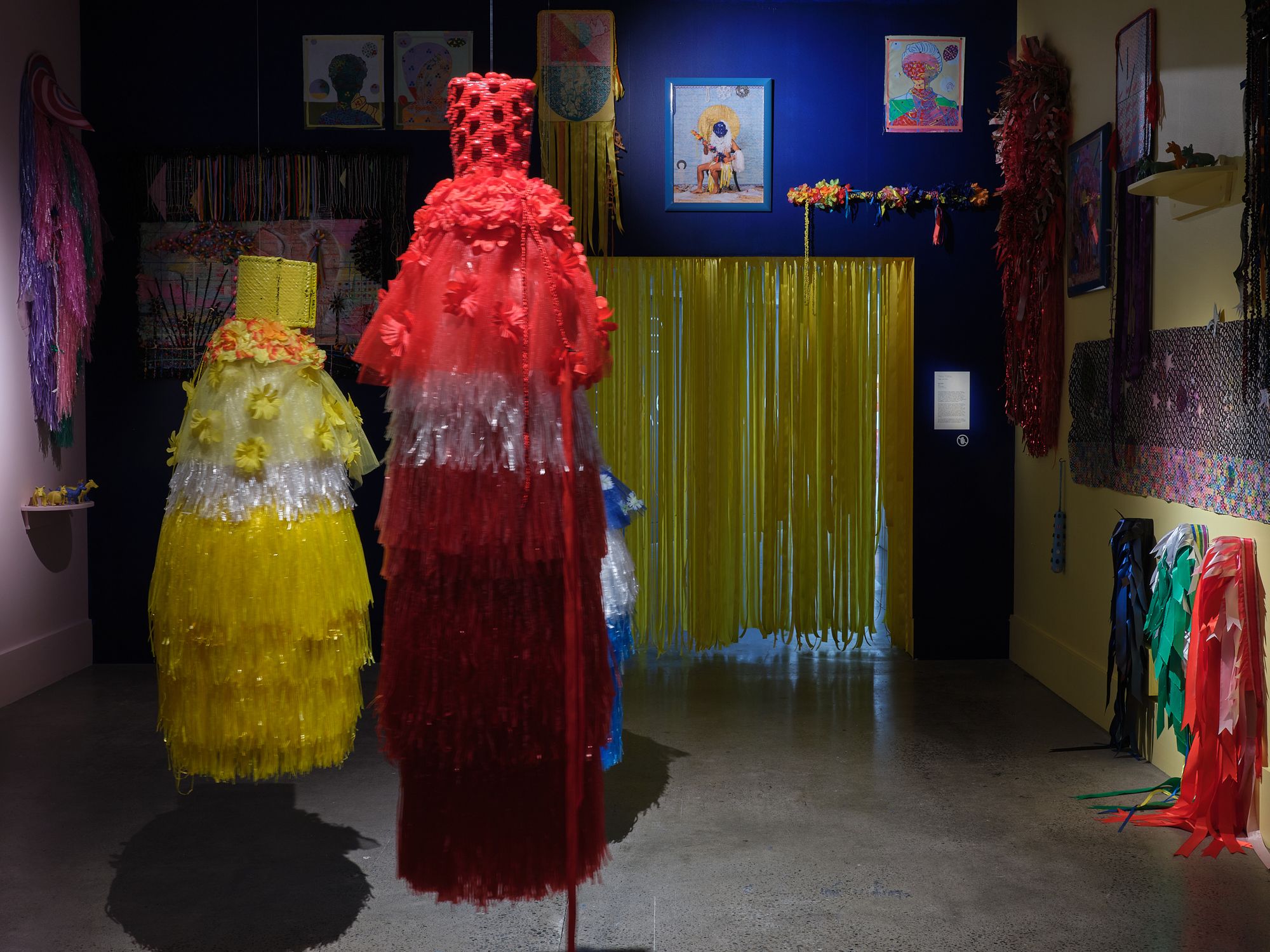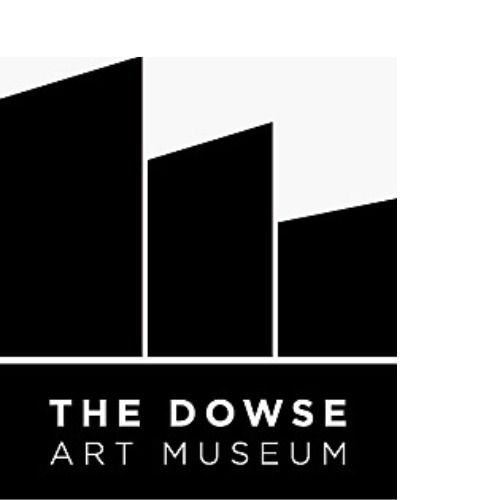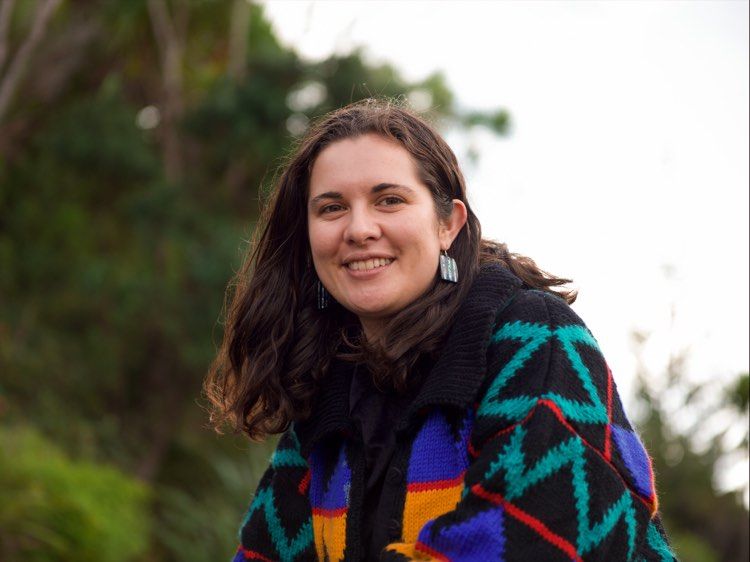Whetūrangitia/Made as Stars: Transforming Indigenous Futurism
And what if colonisation never happened? Sinead Overbye on the bold fresh perspectives from contemporary Indigenous artists in Whetūrangitia/Made as Stars, at The Dowse.
‘Whetūrangitia’ is a verb used in whaikōrero to describe the transformation of loved ones who have passed away – Ki a rātau kua whetūrangitia, haere, haere, haere – which speaks of those who have left their earthly bodies to become stars. This metaphor encompasses an understanding of cosmological concepts and formations in the maramataka, such as Te Waka o te Rangi, on which the spirits of our loved ones who have died voyage to become stars.
The exhibition Whetūrangitia centres Indigenous metaphors and knowledges from the outset, and leads me to expect the intergalactic and otherworldly. The exhibition moves between the physical realm – our homelands, histories and lived experiences – and the spiritual realm; and between past, present and future. These elements are constantly in conversation with each other throughout the exhibition.
Ki a rātau kua whetūrangitia, haere, haere, haere
As a viewer and reviewer, I position myself as a Māori woman, and acknowledge that Indigenous perspectives are not homogenous. I want to acknowledge the diversity of identities in this exhibition, and respect all the artists’ expertise in representing the world from their distinct points of view.
Past – Present
Entering the exhibition, the first work that catches the eye is a circular video work called Ulitsuak | Rising Tide,by Glenn Gear, which includes footage of the artist’s homeland of Nunatsiavut. An array of black-and-white illustrations reaches out from the video and across the gallery wall, displaying Inuit geometric design, urban landscapes and wild animals. These designs also appear as transitions between videos, providing rhythmic and mesmerising interludes between landscape images.
land as viewed through Indigenous eyes
This piece speaks to the love Gear has for their homeland. It presents us with land as viewed through Indigenous eyes, and asks us to step through that portal and deepen our understanding of Indigenous connections to ancestral places, all the while bringing to light the devastating impacts that colonisation and climate change have had on our lands.
The deep-rooted connection Indigenous peoples have with the natural world recurs throughout many of the works. Hannah Claus’ artwork teyoweratá:se hangs from the ceiling – a series of discs that appear to flutter in mid-air, casting shadows on the ground below. The formation references the Haudenosaunee creation story, and the important role of kayér:i nikawerá:ke, or the four winds, in passing on tradition and values. The shadows cast upon the ground emphasise the connection between physical and spiritual worlds as inseparable.
Whetūrangitia/Made As Stars exhibition installation featuring work by Hannah Claus. Courtesy of the artist and The Dowse Art Museum
Other works, like Ice spirit and Black wolf spirit by Tcheu Siong, and Mai Te Uira by Kereama Taepa, interact with this theme in a different way. By using the physical medium of their art form, each of these artists gives form to spiritual beings and atua that are often only experienced through feeling, oral histories or dreams. Siong uses appliqué techniques to create images of spiritual figures that have visited her in dreams. She uses a limited colour palette of blue, yellow, black and green to construct these towering figures. Both wolf and ice spirit represent a spiritual connectedness and prescience that Indigenous peoples are in tune with. This is reminiscent of other artistic, non-figurative ways we represent our atua and ancestors.
Whetūrangitia/Made As Stars exhibition installation featuring works by Tyrone Te Waa, Jasmine Togo-Brisby and Kereama Taepa. Courtesy of the artists and The Dowse Art Museum
In Taepa’s digital animation Mai Te Uira, Uira (the atua of lightning) takes human form. Curled in a foetal position, floating in mid-air, Te Uira pulses with lightning. The work symbolises innovation and change as being essential elements of the Māori reality. Taepa performs this innovation in the creation of the work itself.
The act of artistic interpretation in these works brings spiritual beings, which are often only felt, into the physical realm. These spirits exist in multiple realms – in our stories and dreams, our imaginations, and our tangible reality.
Whetūrangitia/Made As Stars exhibition installation featuring work by Jasmine Togo-Brisby and Kereama Taepa. Courtesy of the artists and The Dowse Art Museum
Many of the works are about reaching and connecting back to tīpuna who have passed ‘beyond the veil’, or reaching into stories to pull our gods into the present. The boundaries between present and past, and physical and spiritual, are fluid and complex.
In the next room, Mātua, by Maioha Kara, serves as an embodied artistic conversation with her father’s artwork. She presents us with a form that is reminiscent of the waha, or mouth shape, on carved ancestral figures, and places circles of glitter across the work. These are placed like constellations, and the glittering texture of the work reinstates the cosmological elements of this exhibition – representing the celestial bodies in the night sky. Drawn into the orbit of Mātua are other works that take these elements of wairuatanga and cosmology and blast them even further into the future.
The boundaries between present and past, and physical and spiritual, are fluid and complex
All-Time
On the back wall of the second main room, Ningwasum, a Nepalese sci-fi film by Subash Thebe Limbu,plays. This film draws upon Adivasi Futurism. The main character, Miksam, traipses across a grey landscape of stones and mountains, wearing a white spacesuit. She comes from a future where people have cracked time travel, and journeys here in search of her father. Miksam discovers the terrible events in our timeline, and is shocked to find capitalism has resulted in the climate crisis, impacting even the most remote of Indigenous communities. She laments her inability to change the devastating realities of our timeline, and implores us to reconnect with Indigenous knowledges to care for, and protect, the earth.
Miksam is from an imagined future in which all Indigenous peoples have agency, technology and sovereignty, and their Indigenous knowledge, culture, ethics and storytelling intact. The film vividly brings forth and into reality the possibility of alternative timelines where Indigenous people are thriving and un-colonised.
Whetūrangitia/Made As Stars exhibition installation featuring work by Subash Thebe Limbu. Courtesy of the artist and The Dowse Art Museum
One of the central concepts of Whetūrangitia is time. Of course, stars are a perfect metaphor that links us – and unlinks us – from time itself. Stars are the enduring connection between past, present and future. We look into the sky to see the light of stars from hundreds of years ago. By the same token, new stars could already be formed in constellations, without being visible to us. Their light could be shimmering, but not reach our eyes for another hundred years. Stars dismantle Western concepts of time completely, and leave us untethered – existing in a fluid space between past, present and future.
Future
In the Distorted Dream Lands series by Pati Tyrell and Ahsin Ahsin, a new and unexpected futuristic component of the exhibition emerges. These works depict new gods, ones that do not carry an ancestral whakapapa to the past, but weave a whakapapa into the future. They explore reimagined and speculative futures that launch us into an alternative timeline – into a world where Indigenous peoples were never colonised.
Stars dismantle Western concepts of time completely, and leave us untethered – existing in a fluid space between past, present and future
The figures in these portraits are all people of colour shown amongst the elements they are empowered with. They are named Navigator, Warrior and Healer respectively, which speaks to the particularly heroic roles these positions play in traditional Indigenous societies. Instead of a vague ‘Superman’ or ‘Wonder Woman’, these heroes are specific to the culture they come from, and each holds domain over a different natural realm. Navigator is shown in an oceanic world, amongst jellyfish and water, Healer has vines growing from their back, signalling earth and nature, and Warrior exists in the realm of fire. Each atua is caught in the midst of action, as if they were characters in a film. There’s a luminescence to them that makes it clear these atua have transcended humanness to become gods.
Dr Grace Dillon coined the term ‘Indigenous Futurisms’ in 2003 to describe a new sensibility in the arts that draws on Indigenous sciences and knowledges to create possible future realities where Indigenous peoples were never colonised at all. Indigenous Futurisms give Indigenous peoples all over the world the opportunity to reimagine their realities, and to reinvent new futures on our own terms. Our histories have been shaped for us, through the impacts of settler-colonialism. But Indigenous Futurisms are a way to take back control over our pasts, and shape our own histories.
Indigenous Futurisms are a way to take back control over our pasts, and shape our own histories
Solomon Enos’ Polyfantastica also depicts visions of Indigenous Futurisms. Comprised of a suite of 400 drawings in a visual timeline spanning 40,000 years, Enos’ works depict an alternative reality for Indigenous Hawaiian people. The drawings display strange and futuristic figures who evolve away from the current conceptualisation of the human form to become super-beings. Just as in the Distorted Dream Lands series, Polyfantastica gives agency back to Indigenous peoples and reverses historical atrocities committed against them, while also looking to potential future innovations (such as the possibility of being able to travel to other galaxies). Enos imagines an alternate past, where his ancestors woke up and never saw sails on the horizon, and continued going about their lives. Enos writes complex histories for his characters, which include developments like wars, pandemics, religious movements and shifting power dynamics. However, he envisions a world where humans eventually unlearn violence, colonisation and war – challenging the idea that these things are inevitable.
Enos asks the provocative question, “What if all of our Indigenous cultures were left to thrive?”
The colonial project, and its racist depictions of Indigenous peoples as ‘primitive’ and ‘savage’, has meant that imagined alternatives to our pre-colonist past (and what Indigenous peoples’ lives would be like “if it hadn’t been for colonisation”) often look like dirt floors, bare feet and uncivilised living conditions. This exhibition dismantles these racist assumptions and subverts Western narratives about the so-called ‘benefits’ of colonial ‘progress’. Ahsin, Tyrell and Enos represent Indigenous Futures in which we have technologically evolved without colonisation – retaining our culture, identity, lands and sovereignty, as well as having the kinds of futuristic technologies we dream about today.
Whetūrangitia/Made As Stars exhibition installation featuring work by Solomon Enos, Pati Tyrell and Ahsin Ahsin. Courtesy of the artists and The Dowse Art Museum
These days, many people talk about decolonisation, and how this might be achieved. The prefix ‘de’ refers to a reversal, or a descent. Whetūrangitia goes further, to imagine un-colonisation, a term that insinuates a non-event or an aspect of ‘it never happened’. Indigenous artists are gravitating towards Indigenous Futurisms so we can un-colonise ourselves, un-slaughter our people, and un-pollute our waters and our lands. It’s no wonder that these concepts are popular and thriving amongst Indigenous artists worldwide.
Indigenous artists are gravitating towards Indigenous Futurisms so we can un-colonise ourselves
Future II
In the final room of the exhibition, Telly Tuita creates a space that explodes with colour. Heliaki combines mixed media, and includes elements from painting, costume, photography and sculpture to represent a contemporary Tongan identity. Tuita presents us with a multi-faceted and complex identity, which has been impacted by colonisation and globalisation alike. Tuita travels from Tonga to Australia to Aotearoa, and uses dynamic approaches and materials from our contemporary age to create Tongpop artworks. These envision a new pop culture, inspired by Tuita’s Tongan heritage, while embracing elements from the Western world.
Tuita’s work brings up the question: How can we carry on, taking the things colonisation has left us with, and invent a new pop culture for ourselves? Or a new future for ourselves? Or a new perspective on history?
Whetūrangitia/Made As Stars exhibition installation featuring work by Telly Tuita. Courtesy of the artist and The Dowse Art Museum
For me, this exhibition goes beyond what the wall text asks: “What if our atua actually existed?” Instead, Whetūrangitia calls into question the need to justify their existence. The artists have continuous, lived relationships with their gods, ancestors and histories that make their experiences of the world multi-temporal. In this exhibition, they bring all those experiences to life.
The exhibition prompts the bold and striking question: What if colonisation had never happened? What knowledges might we remember? Where would we be as Indigenous peoples? And what powers could we unleash into the world?
Whetūrangitia gives a fresh perspective on the act of transformation
Whetūrangitia gives a fresh perspective on the act of transformation. In becoming stars, we leave the earthly world and journey through time and space to new realities. We are enabled to transform not just ourselves, but our histories, our futures, and the present world in which we live. We draw on deep, ancestral knowledges of time and space to move forward, and give ourselves license to wildly imagine new realities, in which atrocities that have happened in this timeline have not.
Whetūrangitia is an exhibition currently showing at The Dowse Art Museum in Te Awa Kairangi ki Tai Lower Hutt. Curated by Karl Chitham, the exhibition features works by Indigenous artists from Aotearoa, Nepal, Canada, Hawai‘i, Sāmoa, Tonga and Laos, including Ahsin Ahsin, Hannah Claus, Solomon Enos, Glenn Gear, Robert Jahnke, Maioha Kara, Subash Thebe Limbu, Tcheu Siong, Kereama Taepa, Tyrone Te Waa, Jasmine Togo-Brisby, Telly Tuita and Pati Tyrell. Whetūrangitia/Made as Stars also has a unique visual identity as one of the works in the exhibition, created by Extended Whānau.
The exhibition runs until 19 February 2023.
*
This piece is presented as part of a partnership with The Dowse Art Museum, which covers the costs of paying our writers while we retain all editorial control.
